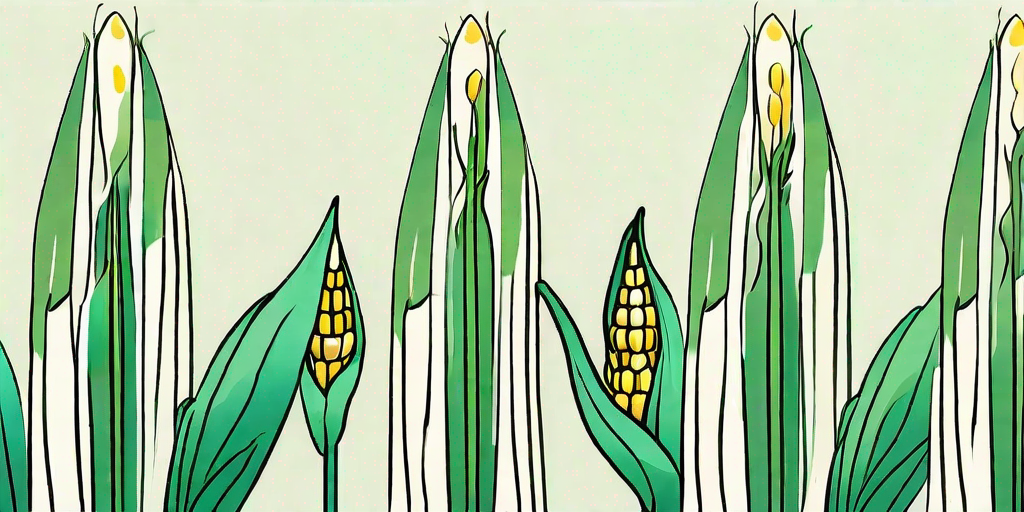
Ah, the humble corn plant. A staple of American agriculture and a popular houseplant worldwide. But what's that? You're having trouble with your corn plant's lighting needs? Fear not, dear reader. We're here to illuminate the situation. Let's delve into the world of corn plant lighting, and how you can ensure your leafy friend is getting the best rays possible.
Understanding Corn Plant's Lighting Needs
The Importance of Light
Light is to plants what Netflix is to us humans - absolutely essential. Without light, photosynthesis, the process by which plants convert light into energy, cannot occur. For corn plants, this is especially important. They're like the sunbathers of the plant world, always seeking out the best spot to catch some rays.
However, just like us, too much of a good thing can be harmful. Corn plants can get sunburnt, leading to yellowing leaves and stunted growth. So, it's all about finding that sweet spot between too much and too little light.
Indoor vs Outdoor Lighting
Now, you might be thinking, "Well, I'll just stick my corn plant outside then." Hold your horses, eager gardener! While corn plants do love the sun, they're not so keen on the harsh, direct sunlight we often get outdoors. They prefer indirect, bright light, which can be more easily controlled indoors.
Indoor lighting also allows you to control the duration of light exposure. Corn plants typically need around 10-14 hours of light per day. So, unless you live in the Arctic Circle during summer, you're going to struggle to provide this naturally outdoors.
Choosing the Right Light for Your Corn Plant
Natural Light
As we've mentioned, corn plants love bright, indirect light. So, placing your plant near a north or east-facing window is ideal. However, be sure to keep it out of direct sunlight, especially during the hottest part of the day. Think of your corn plant like a vampire - it loves the light, but direct sunlight? Not so much.
If you don't have a suitable window, don't despair. There are plenty of artificial lighting options available. And no, we're not suggesting you install a tanning bed for your corn plant.
Artificial Light
Fluorescent lights are a great option for corn plants. They provide the right spectrum of light for photosynthesis, without the risk of sunburn. Plus, they're energy efficient, so you won't have to worry about your electricity bill skyrocketing.
LED lights are another good choice. They're even more energy-efficient than fluorescent lights and can be adjusted to provide the perfect light spectrum for your corn plant. Just be sure to choose a light that's labeled as "full spectrum" or "white" to ensure it covers all the light wavelengths your corn plant needs.
How to Set Up Your Corn Plant's Lighting
Placement
When setting up your corn plant's lighting, placement is key. If using natural light, place your plant near a window, but out of direct sunlight. If using artificial light, place the light source around 6-12 inches above the plant. This will ensure the light is evenly distributed, without being too intense.
Remember, corn plants are a bit like Goldilocks - they don't want their light too close, or too far away, but just right.
Duration
As for how long to leave the lights on, aim for around 10-14 hours per day. You can use a timer to make this easier. Just be sure to give your corn plant a break. They need their beauty sleep too, you know.
And there you have it - a comprehensive guide to lighting for your corn plant. Now, go forth and let there be light!
Frequently Asked Questions
Can corn plants survive in low light?
While corn plants prefer bright, indirect light, they can tolerate low light conditions. However, their growth may be slower and their leaves may not be as vibrant.
Can I use a regular desk lamp for my corn plant?
It's possible, but not ideal. Desk lamps typically don't provide the right spectrum of light for photosynthesis. Plus, they can produce a lot of heat, which can be harmful to your corn plant.
How can I tell if my corn plant is getting too much light?
If your corn plant's leaves are yellowing or looking burnt, it may be getting too much light. Try moving it to a shadier spot or reducing the duration of artificial light exposure.
How can I tell if my corn plant is not getting enough light?
If your corn plant's leaves are dark green or it's not growing as fast as usual, it may not be getting enough light. Try moving it closer to a light source or increasing the duration of artificial light exposure.















